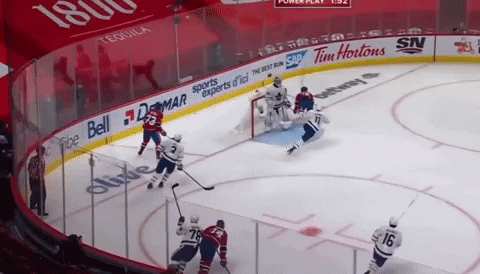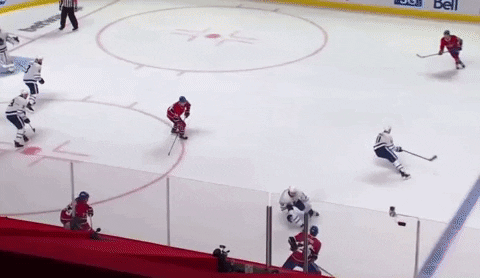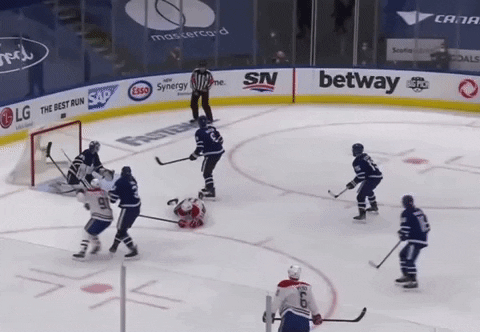Special teams are some of the most important situations for any team. Power play / Penalty kill can change a game in an instant. Finding ways to make your penalty kill better is a recipe for winning more games.
In soccer/football, the press is a common tactic for a team to pressure. It’s not enough though for just 1 player to pressure the ball. Unless other players go with them, it’s a waste of energy as the opposition can easily play around them.





The key area I want to focus on is the trigger that signals to every player that it’s time to pressure/press the opposition in possession.
Penalty Kill
When on the penalty kill (PK) there is more space per player to cover and you cannot play person-on-person coverage. If you do, it’s very easy for the opposing team.
Therefore, the PK is unable to pressure all players at the same time as a man-on-man coverage system would entail. The PK must pick and choose when to apply pressure in an attempt to disrupt the opposition.
Each team should have pressure keys that let the group know when they should pressure the opposition. This can be location-based such as the USA Soccer example above. This can also be situationally based. The two most common being:
Backs
Bobbles
Key #1 - Backs
When a player shows their back they are in a vulnerable position. They cannot see what is happening and answer key questions - Is there pressure coming? Where is the pressure coming from? Where is my support? Are the passing lanes open?
This lack of awareness is a great opportunity to pressure and attempt a disruption. It’s often caused by poor body orientation or laziness by the power play.
Key #2 - Bobbles
When a puck is bobbling, a player is not concerned about the next play and is highly concerned about controlling the puck. They are not thinking about passing, attacking, and creating issues for the defense.
This moment of panic and lost focus on attacking is a great opportunity to pressure and attempt a disruption. These are often caused by poor ice conditions or off a shot (rebound/redirection).
Critical Element - “4-Go”
Although I’ve touched on it earlier, I want to stress the importance of the entire group being on the same page and pressuring together. The puck carrier engages the puck carrier in a battle while the rest move to the best passing options to lock them down.
This is often called a “4-go.”
Here is an example where Spezza (White #19) doesn’t close on #73 red quick enough and the puck ends up with opposition possession.
Here is a great example of the group doing a “4-go,” all going at once to gain possession and relieve the pressure.
Inserting Pressure Keys
When looking to improve a penalty kill, one of the first things to do is to find ways to improve pressure on the opposition and get every penalty killer on the same page.
This is the starting point for a group. As players become advanced there are more options, variabilities, and abilities to create disruptions.
What kind of pressure keys do you use as a coach or as a player?
Further Reading - Defensive principles to win the puck back
Did you enjoy this newsletter?
Help us spread the ideas within and share it with the people you care about






